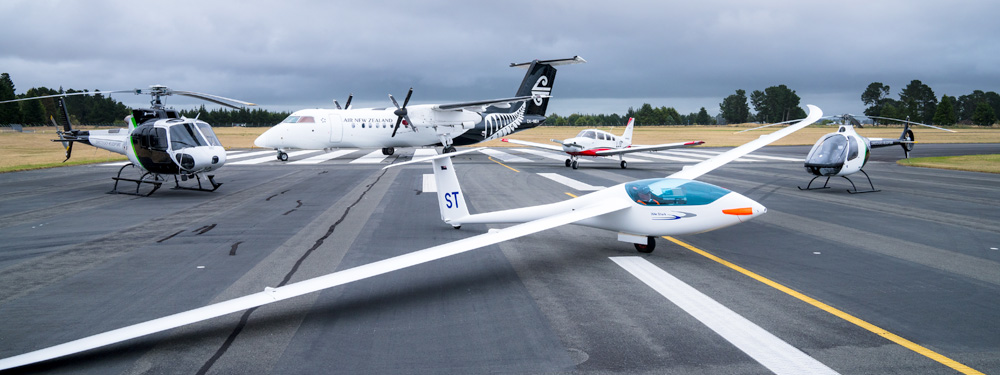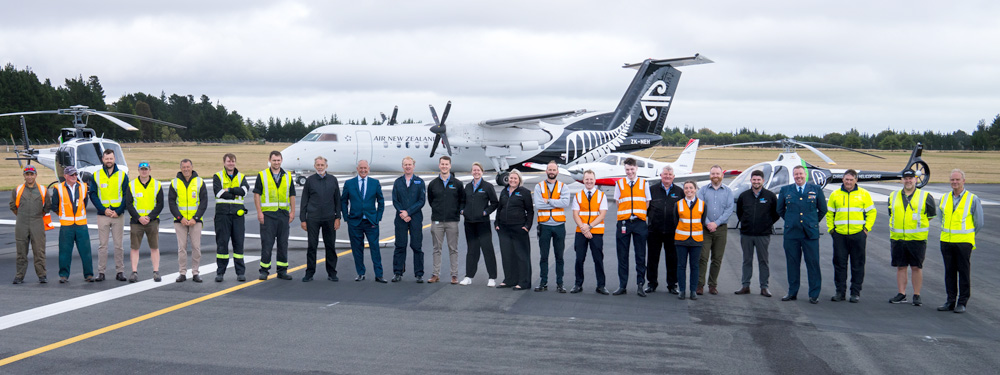The Civil Aviation Authority has concluded its largest nationwide safety campaign, Work Together, Stay Apart (WTSA).
But its main message to the aviation sector still stands — use standardised procedures and best practice.
CAA’s Chief Executive and Director, Keith Manch, says that it’s not good enough to leave safety to chance.
“The safety campaign represents a collective effort with the sector to prevent further tragedies at unattended aerodromes.
“It’s now up to the sector to keep the momentum going,” explains Keith.

WTSA aimed to reduce the likelihood of mid-air accidents and the number of near collisions within the circuit at unattended aerodromes.
Over two years, 226 individuals and 97 organisations signed a statement of commitment, showing support for the campaign’s goal of improving safety at unattended aerodromes. This was followed by engagement with videos, images, and stories on social media and in the Vector magazine.
More than 3,500 attendees participated in 84 educational seminars hosted by the CAA across 31 locations nationwide.
These seminars focused on promoting best practice and strengthening collaboration among operators, with key messages including:
Support from the sector played a crucial role in spreading the campaign’s main messages. Simon Wallace, Chief Executive of the Aviation Industry Association (AIANZ) said,
“AIANZ proudly supported Work Together, Stay Apart because it reinforced the key factors that keep people safe in the air.
“The campaign’s focus on safety was a necessary reminder for everyone in the sector to remain vigilant when flying. I hope this sentiment carries on and a robust culture of safety continues.”

From July 2023 to December 2024, the overall reported number of airborne conflicts at unattended aerodromes were on a downwards trend. However, airborne conflicts at unattended aerodromes remain a serious, ongoing issue.
While acknowledging this progress, Keith Manch emphasised the need for continued caution.
“It’s encouraging to see a reduction in the reported number of airborne conflicts, but we need to remain vigilant. Behaviour and habits will prevent incidents, not statistics.
“The positive response from the sector shows we all share the same goal – to fly safely.
“For us to maintain a safe and secure aviation system, everyone needs to be following standardised procedures and best practice. Complacency isn’t an option,” explained Keith.
With over 161 unattended aerodromes across New Zealand, the Work Together, Stay Apart safety campaign started to address the need for improved safety at unattended aerodromes.
For more information about the campaign and to access free resources, visit Work Together, Stay Apart.
0508 763 222 | media@caa.govt.nz
The following terms are explained, using plain English, to assist the reader. As such, they do not constitute legal definitions.
Air proximity event: a situation where safety of aircraft is believed to be compromised due to the distance between them as well as their relative positions and speed; excludes near collision events.
Airborne conflict: any situation where there is a perceived risk for collision between aircraft whilst in flight.
Unattended aerodrome: an aerodrome that doesn’t have an air traffic service. Although many small aerodromes are always unattended, the term unattended also applies to other aerodromes with air traffic services, when they are off-watch.